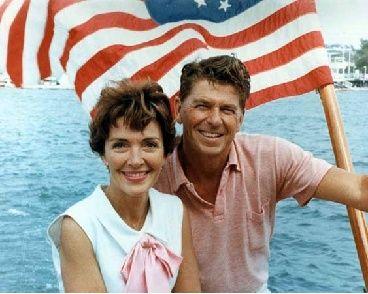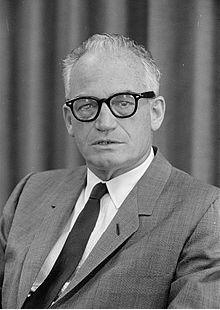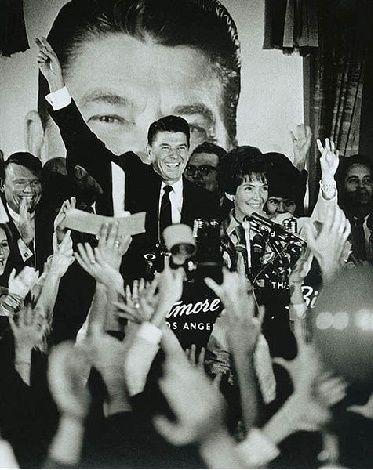America's Greatest 20th Century Presidents (28 page)
Read America's Greatest 20th Century Presidents Online
Authors: Charles River Charles River Editors

The most famous victims of these witch hunts were Hollywood actors, such as Charlie Chaplin, whose “Un-American activity” was being neutral at the beginning of World War II, a position that had been the country’s official status until 1941 and had been held by hundreds of thousands of Americans of all stripes, including a young John F. Kennedy. Of course, Reagan himself was by now a well-known Hollywood political figure. As a result, the FBI began to maintain a file on Reagan, suspecting him to be a communist sympathizer, even while the local Democratic Party urged him to run for Congress.
In 1947, Reagan was elected President of the Screen Actors Guild, which he served until 1952, and then again in 1959. His wife Jane cited his presidency as a distraction and thought her husband was becoming too political when she filed for divorce in 1948. A year later, Reagan met Nancy Davis when she approached him because her own name was being mentioned on a communist blacklist. They began dating and were married in 1952.

Nancy Reagan in 1950

The Reagans in 1964
Regardless of Reagan's daily interactions with communists, he himself was no communist. His earliest political statements were mute on the subject of communism, but as president of the Guild, Reagan came into open confrontation with communists on a regular basis. This solidified his anti-communist alignment. Throughout a series of labor disputes in the 1940's and 1950's, Reagan was left to negotiate with Hollywood leaders, communists and otherwise. He personally found the communists uncompromising and irrational.
By the late 1940's, Reagan had done a complete 360 on communism. The U.S. government, which had earlier suspected Reagan of being a communist, also shifted its position. Instead of spying on Reagan, the House Un-American Activities Committee called Reagan in to testify on the infiltration of communism in Hollywood. Though Reagan opposed communism, he continued to oppose “Red Baiting” as well, and told the Committee that he believed democratic principles trumped the panic of the Red Scare.
By the 1950's, Reagan's career as an actor was in full swing. He transitioned his focus from movies to television, and became host of
General Electric Theater.
His salary now made him fairly prosperous financially. He continued to star in television throughout the early 1960's and became a household name throughout Hollywood and much of the nation.
Chapter 3: Early Political Career and Governor, 1962-1975
“Time for Choosing”
Throughout the 1950s, Reagan remained a Democrat, but his ideological positions were gradually shifting right, spurred in part by his work at the
General Electric Theater
. The executives and corporate leaders at GE, the show's sponsor, helped inspire Reagan to shift his political disposition. Reagan's involvement with GE was not limited to
GE Theater
; he also began working on company advertisements and factory morale. As part of this, he toured GE factories across the country and became better acquainted with the values of middle America. In talking with managers, he learned of the burden of taxes and regulation on company operations.
As President of the Screen Actors Guild, Reagan had endorsed candidates for President. In '52 and '56, Reagan was an Eisenhower supporter, though he fashioned himself a “Democrat for Eisenhower.” By 1960, however, Reagan supported Republican Richard Nixon against Democrat John F. Kennedy, and by the time the election of 1964 rolled around, Reagan had not only completed his shift to the right but was now closely identified with its most radical faction. Far right politicians across the country sought Reagan as a spokesperson and public supporter. These included Southern Governors Ross Barnett and Orville Faubus. Most important among these politicians, however, was Senator Barry Goldwater of Arizona. Reagan's transition from suspected communist to champion of an untouchable free market was now complete.

“Mr. Conservative”, Barry Goldwater
Reagan was the Barry Goldwater Campaign Co-Chair in California in 1964. Goldwater's victory for the Republican Presidential nomination was not easy, and his eventual triumph sent tremors throughout the Republican establishment. In challenging the more moderate Eastern wing of the party, Goldwater took the reins of power away from the presumed frontrunner, Nelson A. Rockefeller. Until 1964, the moderates had dominated the GOP, but Goldwater ensured that conservatism would forever leave its mark on the Republican Party.
Ronald Reagan proved a more effective spokesman for Goldwater than the candidate himself. Reagan’s charisma and down-home eloquence made him popular within the Goldwater campaign. Because Goldwater's far-right positions – opposition to civil rights legislation and the New Deal and a tough line on the Soviet Union – alienated much of middle America, Reagan, as a former Democrat, was sought to help sell Goldwater to the American people.
In a film called “Time for Choosing,” Reagan articulated Goldwater's message better than the Arizona Senator himself. While Goldwater was mired in accusations of racism and extremism, Reagan turned America's attention to the size of government: “The issue in this election is whether we believe in our capacity for self-government or whether we abandon the American Revolution and confess that a little intellectual elite in a far-distant capital can plan our lives for us better than we can plan them ourselves.”
Despite his eloquence, Reagan's arguments went mostly unheeded in 1964. Reagan's devout enthusiasm for Barry Goldwater was very clearly not shared by his fellow Americans; Goldwater lost to Lyndon Johnson in the biggest popular vote loss in American history, a landslide that affected Republicans across the country dragged down by Goldwater, who was perceived to be too rightwing. Amid a seeming consensus on “New Dealism” and a desire to calm racial tensions in the South, Goldwater's views were seen as far outside of the American mainstream, a theme Johnson’s campaign struck on time and again. In one of the most famous and memorable political ads in American history, the “Daisy” Ad, Johnson’s campaign implied that voting for Goldwater could lead to nuclear war. A similar ad would be used in 1984 by presidential candidate Walter Mondale against Ronald Reagan himself.
Despite Goldwater’s shellacking, Reagan continued to believe that this brand of conservatism could appeal to middle America. Goldwater just hadn't been the ideal spokesman.
Running for Governor
Ronald Reagan wasn’t the only one who thought Goldwater was simply a poor salesman of good ideas. Businessmen and Republican leaders throughout California thought Reagan could be a better leader for the conservative movement than Goldwater had been. With the Black Power movement and student protests in Berkeley at the fore of California politics, state Republicans thought Reagan was their only hope. In 1965, a group of wealthy Republican businessmen formed the “Friends of Ronald Reagan” group to draft him as a candidate to run for governor.
Initially, Reagan and his wife were reluctant. Reagan was certainly very interested in the job but was afraid it would put his family into financial distress. After shifting around some of his property, however, Reagan felt comfortable with a smaller salary if it meant he could be governor of California. Still, while many Republicans admired Reagan's charisma, they were also aware that he needed some training before he was ready to campaign. Friends of Ronald Reagan hired a political consulting firm and trained Reagan in the issues facing California to prepare him for a run. Facing the two-term incumbent Democratic Governor Pat Brown would not be easy.
Reagan was the early favorite within the Republican Party and coasted through the gubernatorial nominating process. For his part, Governor Brown was happy to face Reagan in 1966, believing him to be a weak candidate who could easily be pigeon-holed as a right-wing radical and a lightweight Hollywood actor with no political experience.
The campaign focused primarily on the student anti-Vietnam protests and Black Power violence that were pervading life in California. Reagan jumped on the growing resentment of the civil rights movement among white Californians, and he framed his campaign on a promise to restore law and order.
On Election Day, Reagan's message sold. Governor Brown's attempts to label Reagan an extremist fell flat, and Reagan won with nearly 58% of the vote.

The Reagans celebrate victory
Governor of California
Reagan took the oath of office and became governor of California on January 3
rd
, 1967. At 56, Reagan assumed the governorship after having spent the vast majority of his career in Hollywood.
When Reagan became governor, he took hold of a state with a massive budget deficit. During the campaign, Reagan had promised to cut and pare the cost and size of state government. Confronted with an enormous deficit, Reagan thought cutting spending made sense. He soon realized, however, that many of the cuts he desired were either politically untenable or legally impossible. It quickly became obvious that the only solution was to raise taxes. Today Republicans constantly invoke Reagan’s name in support of cutting taxes and/or promising to never raise them, but Governor Reagan put his ideology aside and signed a bill authorizing the biggest tax hike in the history of any U.S. state.
Around the time Reagan came to office, abortion was quickly and heatedly becoming a national topic of contention, and it also arose during Reagan's first term in office. The legislature passed a bill allowing abortions in situations of rape, incest and when a mother's life was in danger. Reagan morally opposed abortion, but he understood the necessity of the practice in these specific situations. Despite opposition from Christian leaders, Reagan signed the bill into law. Reagan would later take a more conservative stance and say that he would have opposed the bill if he had more experience, but over 40 years later, the abortion debate still falls along the same lines.